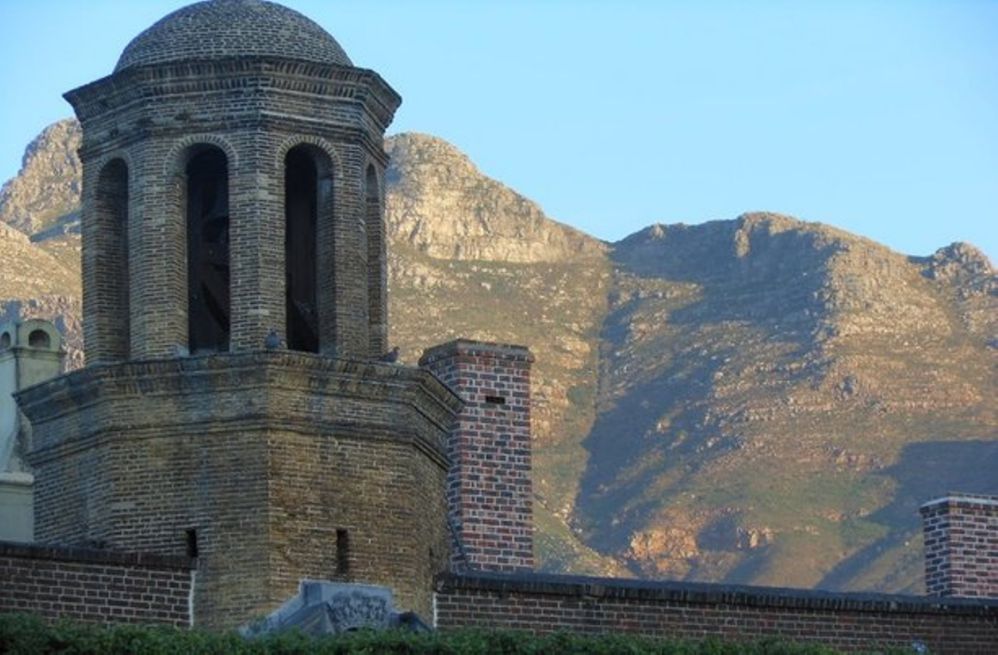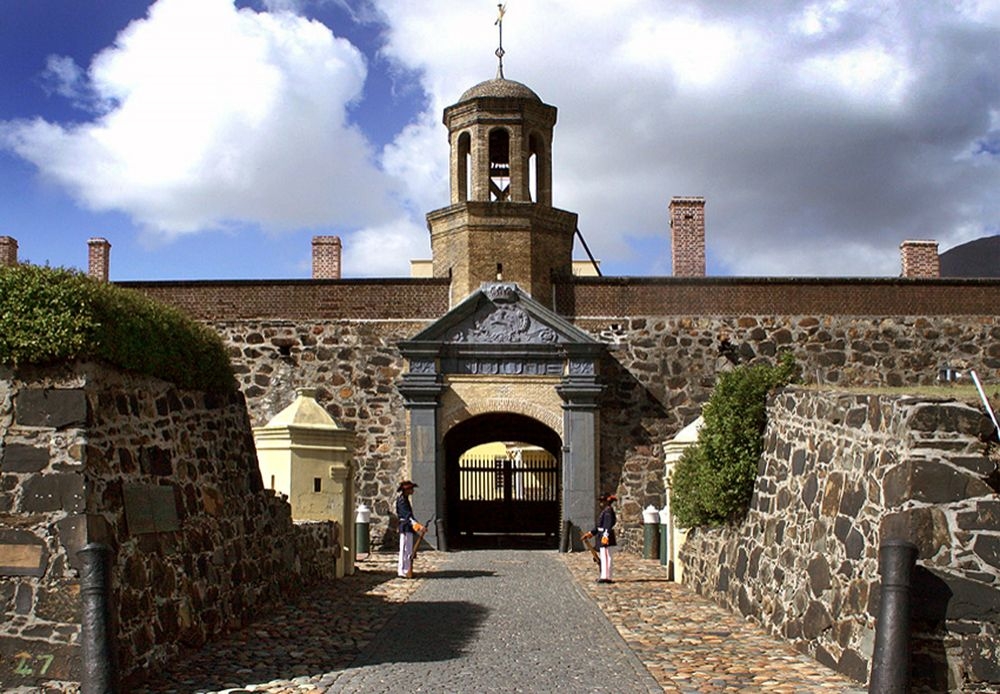A quadrangular (four-pointed) fort was built after the arrival of Jan van Riebeeck in 1652 where the Grand Parade and the main Post Office are situated today. This fort was completed towards the end of 1653 and its inner structures in 1656. However, constant problems were experienced: The walls of the fort, which were constructed mainly of clay, collapsed and required constant repairs. A model of this original fort can be seen in the Castle Military Museum.
Jan van Riebeeck left the Cape in 1662, and was succeeded by Zacharias Wagenaer. In 1664 there were renewed rumours of war between Britain and the Netherlands. Fearing a British attack on the Cape, the Lords Seventeen instructed Wagenaer to build a five-pointed stone Castle similar to other such fortifications in Europe and the East. The Castle was planned around a central point – a water-well under the “Boog” – with five bulwarks known as bastions.
The site of the new Castle was chosen in 1665 by the Commissioner and later first Governor of the Cape, Isbrand Goske. The engineer, Pieter Dombaer, was responsible for the construction of the Castle which was built by slaves, Khoikhoi, burghers, and company workers.

In Cape Town City we visited the Castle of Good Hope. This castle or fort was previously situated on the beach but most of the city foreshore is now inland on reclaimed land. In 1652 the Dutch East India Company built a replenishment station at the Cape of Good Hope for ships traveling from the Netherlands to the Far East in search of spices. Because the trip took one year and two months to complete, sailors needed a place to stop and rest. By 1662, the Dutch felt the need to prepare for the inevitable war with Britain and in 1666, construction began on the castle. It was finished in 1679 with the help of over 300 slaves, soldiers, and sailors. It is in the shape of a pentagon and at each point, there is a bastille. The castle is the oldest colonial building in South Africa. The most interesting part of the tour was the torture chamber where we learned about the lengths the colonists went to in order to get slaves to confess to crimes. 80% of slaves practiced Islam, but at that time it was illegal for anyone to practice a religion other than Christianity. Because of this, many slaves were tortured and even killed for practicing their own beliefs.
By Larkin

